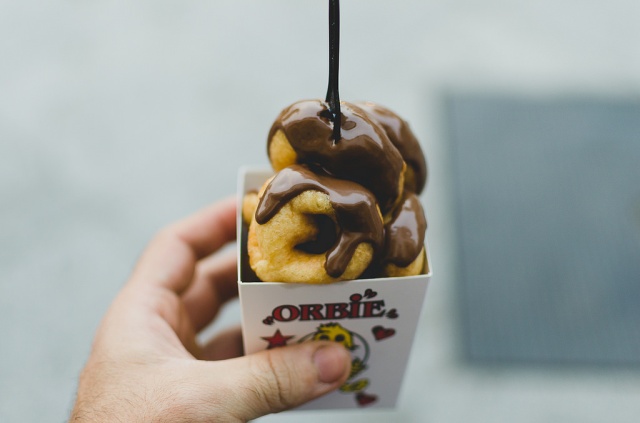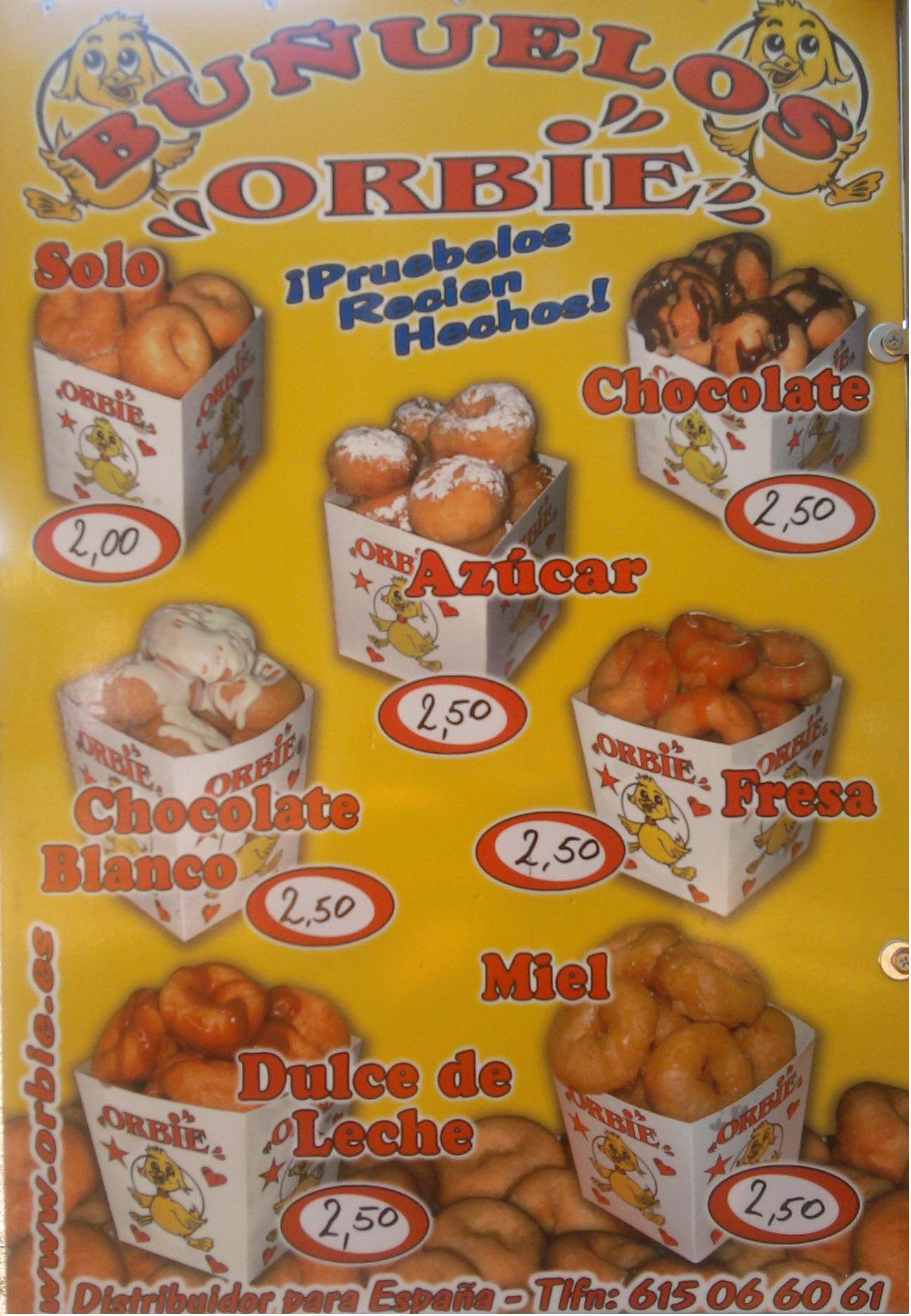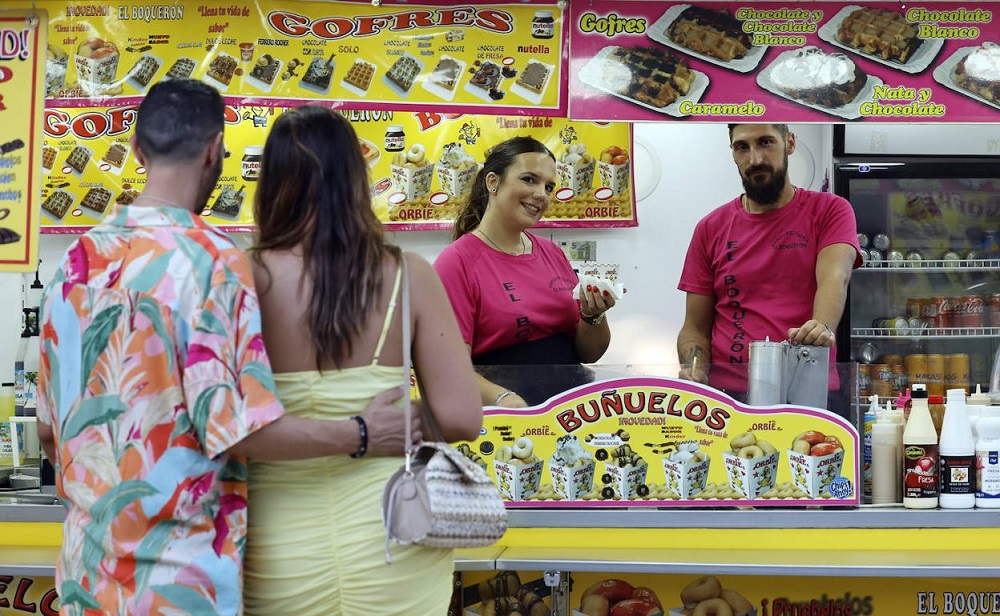In the heart of Andalusia, as the summer sun casts its golden hue over the historic city of Malaga, a festival like no other comes to life. The Feria de Malaga, an annual celebration that encapsulates the spirit, culture, and flavors of Spain, draws locals and tourists alike. While the rhythmic beats of flamenco and the vibrant parades captivate the senses, there’s another star of the show that often goes unnoticed amidst the grandeur – the humble buñuelo. This deep-fried delicacy, with its rich history and undeniable charm, is more than just a treat; it’s a testament to Spain’s culinary heritage. As we delve into the world of buñuelos and their special place at the Feria de Malaga, let’s embark on a gastronomic journey that promises to be as delightful as it is enlightening.
Born in Spain, Carlos Soler’s writings are a blend of rich cultural history and modern narratives. His exploration of love, identity, and human connection has earned him acclaim in the literary world. With novels translated into multiple languages, Carlos’s universal themes resonate with readers globally. An avid traveler, he draws inspiration from diverse cultures, making his works a tapestry of global tales. Carlos is not just an author, but a storyteller who bridges generations with his words.

Table of Contents
- The Origin of Buñuelos
- Buñuelos at the Feria de Malaga
- Where to Find Buñuelos at the Malaga Fair?
- How Buñuelos are Made
The Origin of Buñuelos
Buñuelos, often described as little golden clouds of sweetness, have roots that delve deep into Spain’s rich culinary tapestry. Their history is as layered and intricate as the flavors they bring to the palate.
The Cradle of Civilization
The earliest ancestors of buñuelos can be traced back to ancient Mesopotamia, often referred to as the cradle of civilization. Here, in the fertile crescent between the Tigris and Euphrates rivers, ancient Sumerians and Babylonians enjoyed a simple treat made of grains and water, fried in oil. These rudimentary pastries, sweetened with natural syrups like dates and figs, were perhaps the first inklings of the buñuelos we know today.
Also read our blog about: La Feria de Malaga: Complete guide to understand it
The Influence of the Moors
As centuries passed, the concept of fried dough traveled through trade routes and found its way to North Africa. The Moors, a Muslim community with Berber and Arab descent, embraced and enhanced this culinary concept. Infusing their own flavors, they introduced ingredients like aniseed, sesame, and even citrus zest. It was during the Moorish rule of the Iberian Peninsula, from the 8th to the 15th century, that buñuelos truly began to take on a form recognizable to modern palates.
The Moors, with their advanced agricultural techniques, also introduced new crops to Spain, including sugar cane. This allowed for the creation of refined sugars, which soon became a popular addition to buñuelos, replacing the traditional honey or date syrup.

The Spanish Evolution
As the Reconquista led to the decline of Moorish rule in Spain, the culinary traditions they introduced, including the art of making buñuelos, were adopted and adapted by the Spanish. Each region added its own twist. Valencia, with its abundant pumpkin harvests, birthed the buñuelos de calabaza. In Andalusia, the proximity to North Africa meant that the buñuelos retained much of their Moorish influence, often being flavored with spices like cinnamon and nutmeg.
The Spanish Jewish community, the Sephardim, also played a role in the evolution of buñuelos. During Hanukkah, they prepared ‘bimuelos’, a variant of buñuelos, to celebrate the miracle of oil.
Learn Spanish at Vamos Academy, the Best Language Academy!!!
Study Spanish in Malaga
Enjoy the beaches in Malaga, while you improve your Spanish in Malaga
- Great teachers
- Wonderful experience
- Well-located in Malaga
- The future of Spain
Study Spanish in Buenos Aires
Try delicious empanadas in Buenos Aires, while you improve your Spanish in Buenos Aires
- Wonderful streets
- Delicious dishes
- The best place from Argentina
Study Spanish Online
You can learn Spanish online anywhere at anytime with us
- Anywhere, anytime
- Fantastic learning experiences
- Comprehensive explanations
- Always available
The Global Journey
The Age of Exploration in the 15th and 16th centuries saw Spanish explorers and conquistadors taking buñuelos to the New World. In Latin America, they melded with indigenous ingredients and cooking techniques. In Mexico, for instance, buñuelos are often served with a syrup made of piloncillo (unrefined cane sugar) and guava.
The Modern-Day Buñuelo
Today, buñuelos have transcended their humble origins to become a symbol of celebration and festivity. They are a testament to the rich tapestry of cultures and civilizations that have shaped their evolution. From ancient Mesopotamian grain cakes to the revered treat of Spanish fairs, the story of buñuelos is a culinary journey through time, a delicious chronicle of human history.

Buñuelos at the Feria de Malaga
The Feria de Malaga, a week-long celebration of joy, music, and tradition, is a spectacle that draws both locals and tourists to the sun-kissed streets of Malaga every August. Amidst the flamenco dancers, the horse-drawn carriages, and the vibrant casetas (pop-up party tents), there’s a culinary tradition that has become synonymous with the fair: the buñuelos.
A Tradition Deeply Rooted
The tradition of enjoying buñuelos during the Feria de Malaga has deep roots. For decades, families have flocked to the fairgrounds, children in tow, with one primary culinary mission: to savor the hot, sugar-dusted buñuelos. These treats, often accompanied by a cup of thick Spanish chocolate or a sprinkle of cinnamon, have become a rite of passage for many attending the fair.
Speaking of traditions also read about: Tinto de Verano: All You Need to Know About “Summer Wine”
The Art of Making Buñuelos at the Fair
At the Feria, making buñuelos is an art form. Skilled vendors, many of whom have inherited their stalls from previous generations, work with practiced hands. They deftly shape the dough, often adding a secret family ingredient, and then deep-fry the balls to perfection. The result is a golden-brown delicacy, crispy on the outside and soft on the inside. The air is thick with the sweet aroma of frying dough, drawing fair-goers to the stalls like a siren’s call.
Pairings and Variations
While the classic sugar-dusted buñuelo is a favorite, vendors at the Feria de Malaga have introduced various twists over the years. Some offer buñuelos filled with custard or chocolate, while others drizzle them with local honey or sprinkle them with ground almonds. Adventurous foodies might even come across buñuelos filled with sweet potato or drizzled with Malaga wine reduction.
For many, the perfect pairing with buñuelos is a cup of ‘chocolate a la taza’ – a thick, rich Spanish hot chocolate. Dipping the warm buñuelo into the chocolate, allowing it to soak up the goodness, is a taste sensation that has to be experienced to be believed.

More than Just a Treat
Buñuelos at the Feria de Malaga are more than just a culinary delight; they are a symbol of shared experiences and memories. Families gather around buñuelo stalls, sharing stories of past fairs and making new memories. For many Malagueños, the taste of a buñuelo is a nostalgic trip down memory lane, evoking images of childhood, laughter, and the magic of the Feria.
In conclusion, while the Feria de Malaga offers a plethora of attractions, from traditional dances to thrilling rides, the humble buñuelo holds its own, representing the heart and soul of the fair’s culinary traditions. It’s a testament to the timeless appeal of this simple yet delightful treat that, year after year, amidst the ever-evolving landscape of the Feria, the buñuelo remains a constant, cherished favorite.
More culinary delights: Mastering the Spanish Omelette (Spanish Tortilla): Complete Guide
Where to Find Buñuelos at the Malaga Fair?
At the Malaga Fair, you’ll easily spot distinctive food carts scattered around the grounds. These carts, while operated by different food vendors, have a consistent and recognizable design. They are characterized by their bright yellow color and images of colorful buñuelos displayed on the front. While there are various brands present, “Orbie” stands out as the most renowned. All vendors offer the classic buñuelo base, but what sets them apart are the diverse sauces available for topping. With more than five sauce options to choose from, you can enjoy a unique flavor experience each time.
How Buñuelos are Made
Buñuelos, often referred to as Spanish doughnuts, are a traditional treat enjoyed in many parts of the world, especially during festive occasions. These deep-fried pastries are typically round in shape and can be sweet or savory, depending on the region and preference.
Ingredients:
- 1 cup of all-purpose flour
- 1 cup of water
- 2 tablespoons of unsalted butter
- A pinch of salt
- 2 large eggs
- Oil for frying (traditionally olive oil)
- Sugar for dusting (optional)
- Fillings or toppings like chocolate sauce, jam, or cream (optional)
Steps:
- Preparing the Dough:
- In a saucepan, combine water, butter, and salt. Bring the mixture to a boil.
- Once boiling, reduce the heat and quickly add the flour, stirring vigorously until the mixture forms a ball and pulls away from the sides of the pan.
- Remove from heat and let it cool for a few minutes.
- Incorporating the Eggs:
- Beat in the eggs one at a time, ensuring each egg is fully incorporated before adding the next. The dough should be smooth and glossy.
- Frying the Buñuelos:
- Heat the oil in a deep frying pan or fryer to about 375°F (190°C).
- Using two spoons or a pastry bag, drop small amounts of the dough into the hot oil. Be careful not to overcrowd the pan.
- Fry the buñuelos until they are golden brown, turning them occasionally to ensure even cooking. This usually takes about 4-5 minutes.
- Once fried, remove the buñuelos with a slotted spoon and place them on a plate lined with paper towels to drain excess oil.
- Serving:
- While still warm, sprinkle the buñuelos with sugar or drizzle with your choice of topping.
- Serve immediately and enjoy!
The Feria de Malaga, with its myriad attractions, offers a glimpse into the soul of Spain. And in this vibrant tapestry of traditions, music, dance, and flavors, the buñuelo stands out, not just as a dessert, but as a symbol of celebration. It reminds us that sometimes, the simplest pleasures, like biting into a warm, sugar-coated buñuelo, can be the most memorable. As the festivities of the Feria come to a close and the city returns to its usual rhythm, the taste and memory of buñuelos linger, beckoning visitors to return and relive the magic. So, the next time you find yourself in Malaga during the Feria, amidst the flamenco dancers and the jubilant crowds, take a moment to savor a buñuelo and celebrate the flavors that make Spain truly special.







